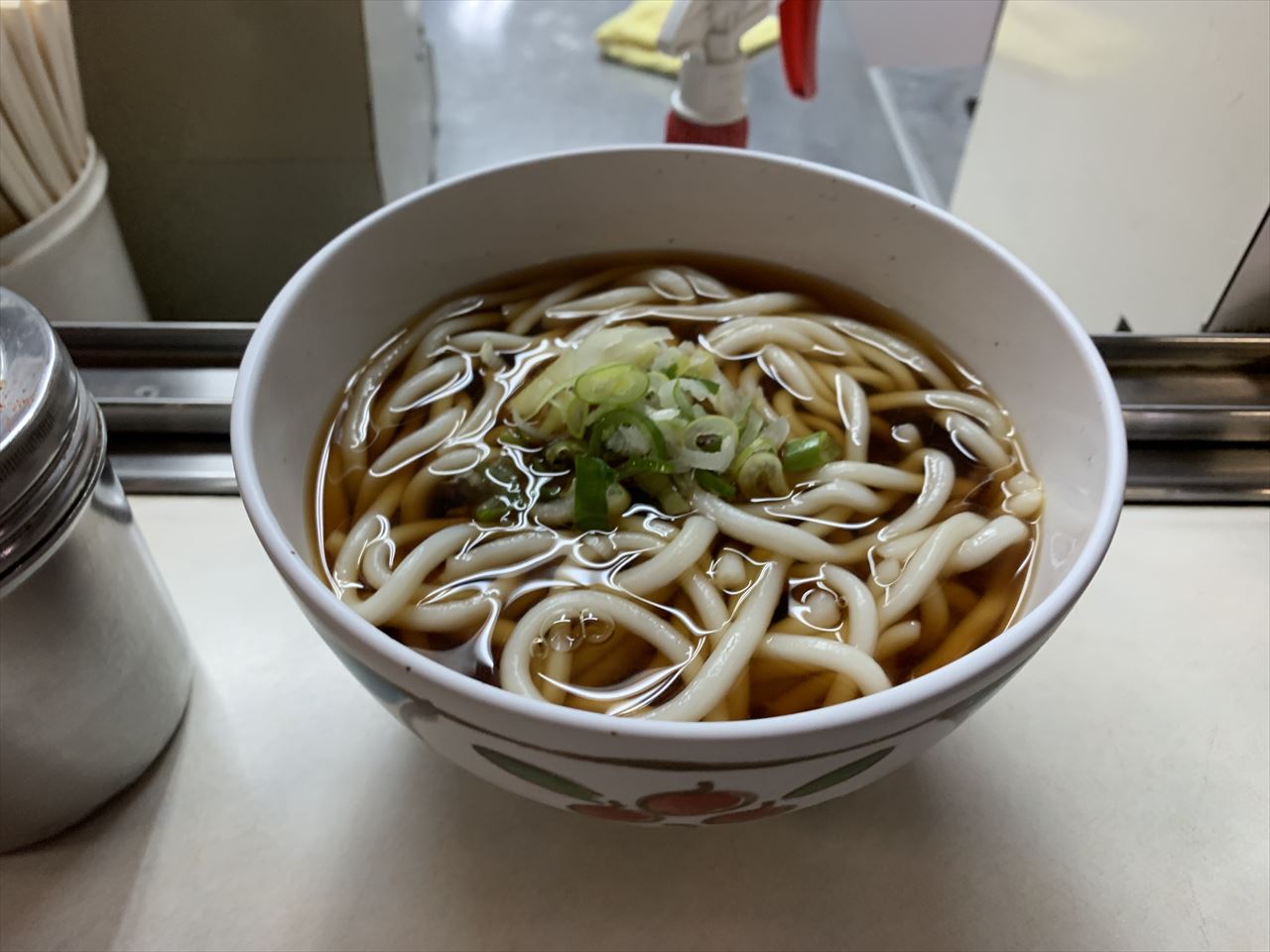Here we introduce udon. Udon is a dish made by kneading wheat flour into long noodles, boiling them, and dipping them in soup.
In Japan, Kagawa Prefecture is known as Udon Prefecture, and its Sanuki Udon is popular all over the country.
The thickness of the udon noodles and the taste of the udon differ a little from place to place, but the major chains that you can easily eat at are the Sanuki udon restaurants.
Marugame Seimen and Hanamaru Udon are two of the most popular udon chains in Japan. Both of these restaurants are based on Sanuki udon.
Marugame Seimen
There are more than 1,000 stores throughout Japan.
Prices start at around 300 yen.
Hanamaru Udon
There are about 500 stores nationwide.
Prices start at around 250 yen.
In addition to these, there are many other udon restaurants throughout Japan, and the prices are generally the same.
It is one of the most popular Japanese dishes that you can eat easily unless you go to a very expensive restaurant.
There are several types of udon, but I will venture to introduce two here.
The first is "Kake Udon".
This is a warm udon.
The other is zaru udon.
This is cold udon.
If you are new to the restaurant, please learn these two types of udon first.
Here is a guide to the main ordering process at Marukame Seimen.
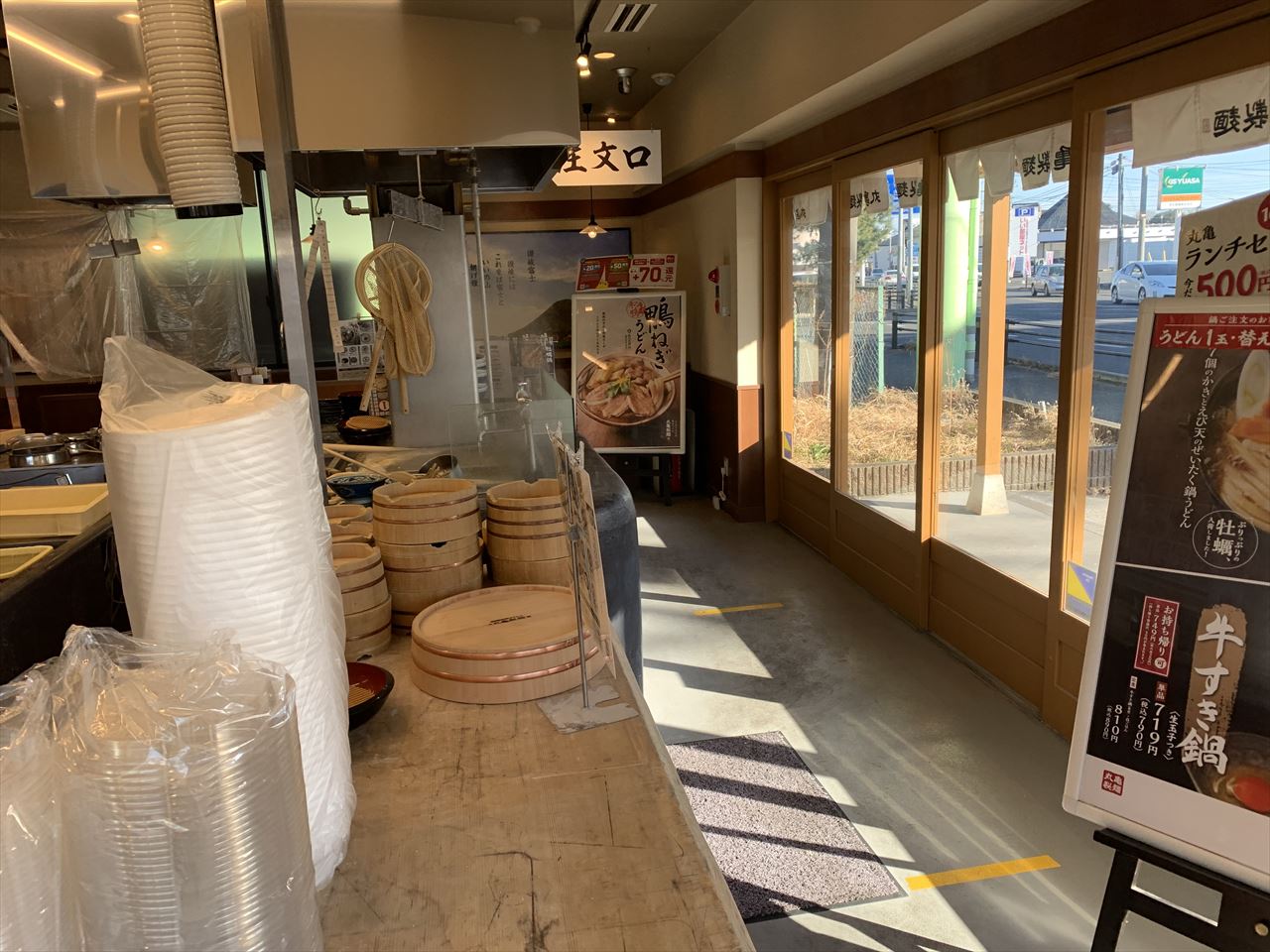
First, you enter the store.
There is a menu, so you can look at the menu and order, but in the case of an udon restaurant, you basically have to tell them in words.
However, in the case of udon restaurants, you basically have to tell them in words, so you can just point to the udon you want to eat.
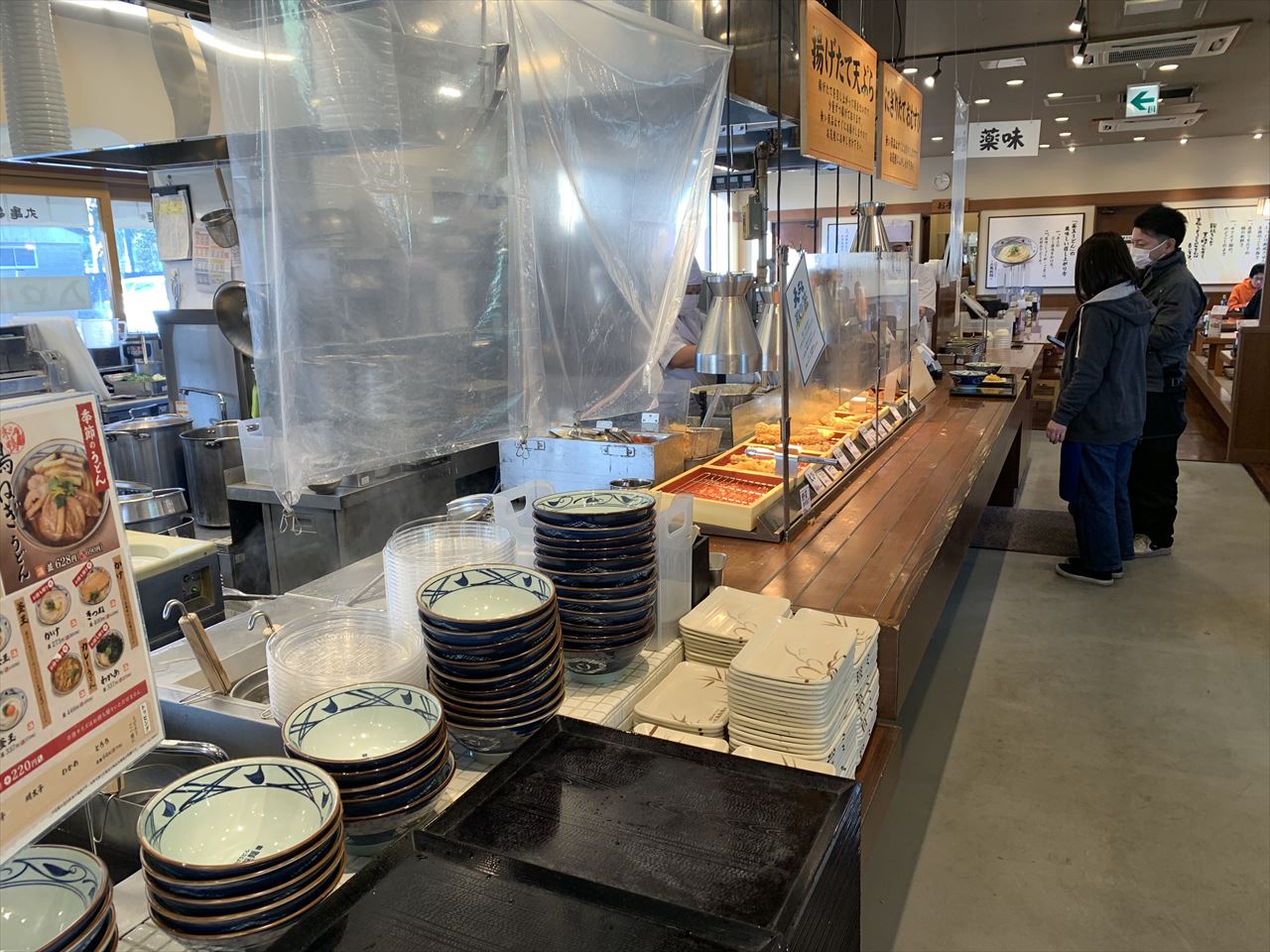
On this day, I wanted to eat cold udon, so I ordered the Zaru Udon.
Next is the "size.
There are three sizes of Zaru Udon at Marugame Seimen: "Nam", "Dai", and "Toku".
Nami is the regular size (260 g), Dai is the medium size (390 g), and Toku is the large size (520 g).
Here, I order the "zaru".
"Zaru, Nami, Ichigo.
"Type, size, quantity.
to the waitress.
They will quickly prepare the udon on the spot, so wait for 30 seconds to a minute after ordering.

When the udon is ready, they will put it on a tray.
Keep moving to the side.
Then, you will see an array of tempura as toppings.
You can choose from a variety of tempura starting at about 100 yen, and you choose the one you want to eat.
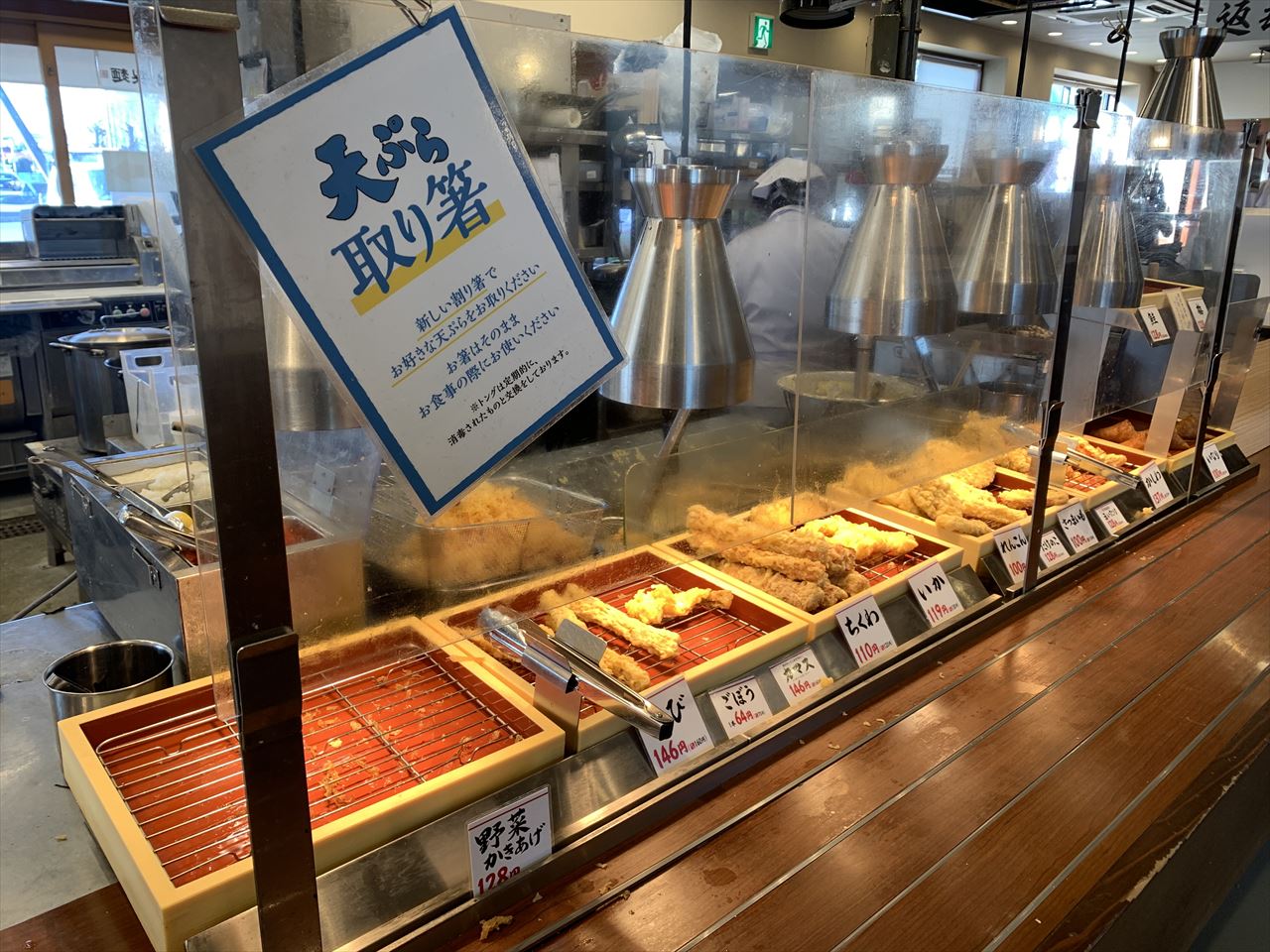
After the tempura corner, it's time to pay the bill.
Basically, you'll want to have some cash ready because you'll probably have to pay in cash (more and more Marugame Seimen stores are accepting credit cards).
A medium-sized bowl of Zaru Udon and 1 Tempura will cost you around 400 to 500 yen.
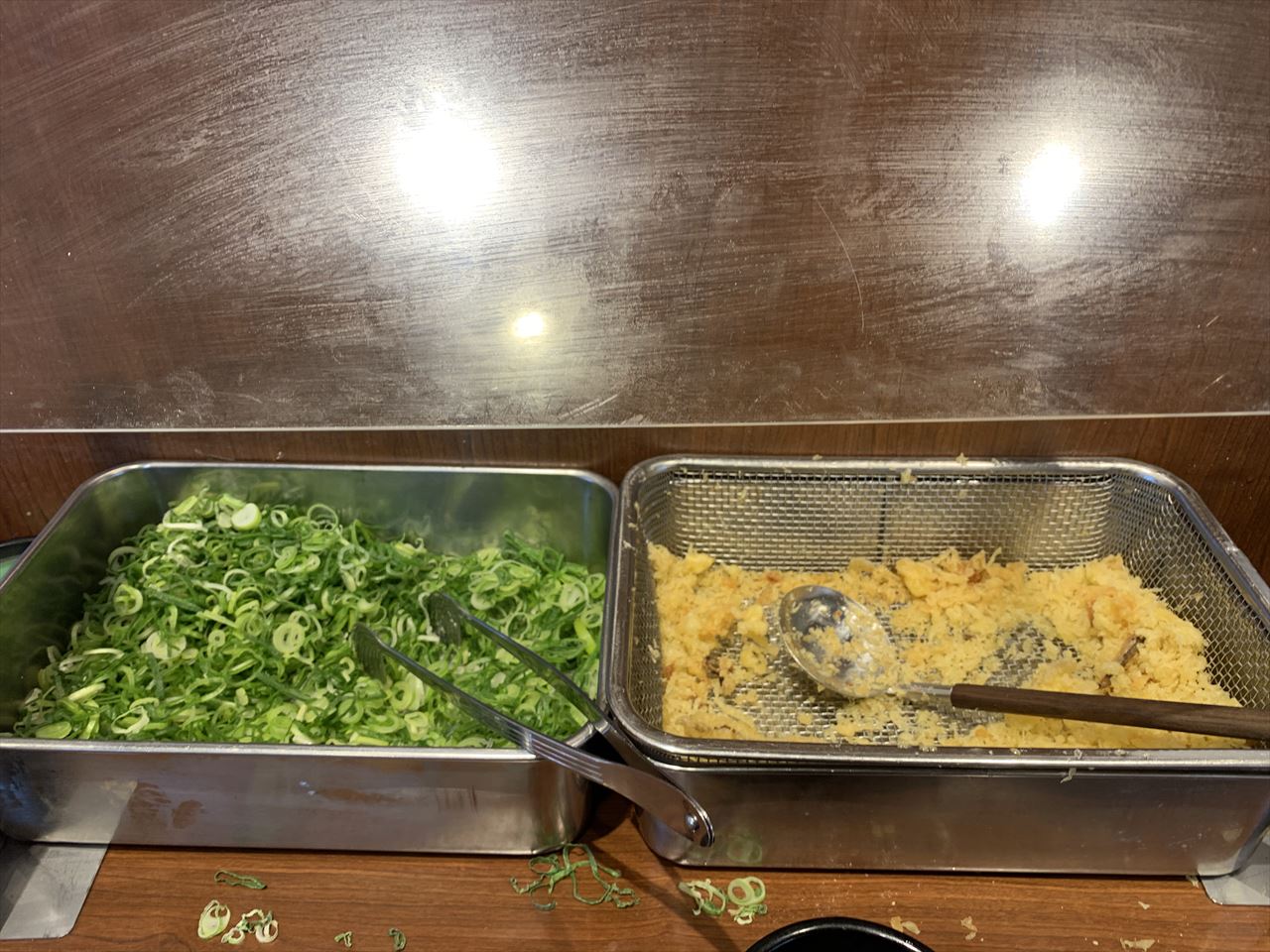
If you don't buy tempura, you can still write for free after you pay the bill, "tenkasu," the part of the tempura that is removed from the tempura when it is fried.
In Japan, udon with this "tenkasu" is called "tanuki udon.
You can also add as much green onion as you like.
You can put as much as you like.
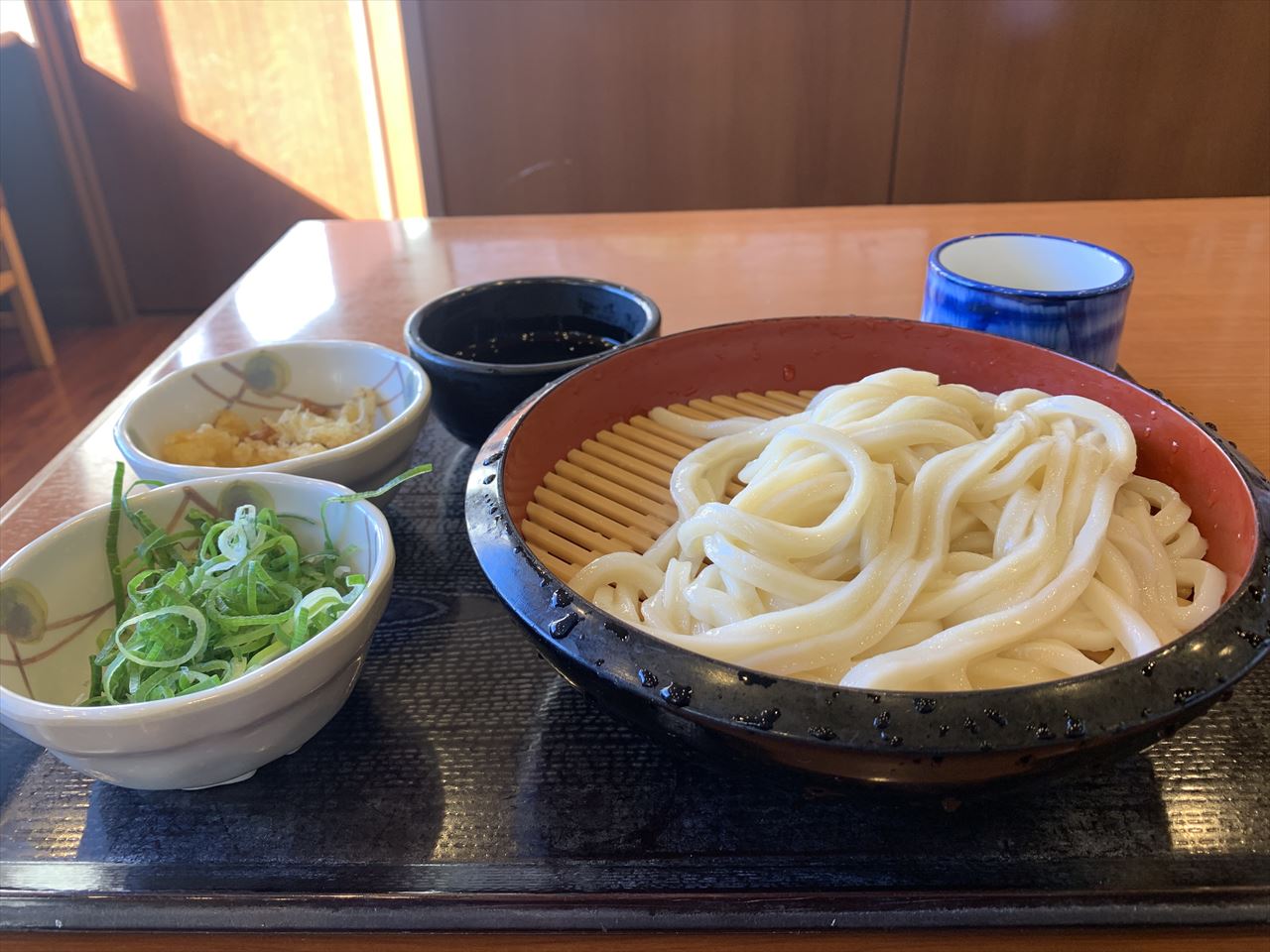
This is how the udon was made.
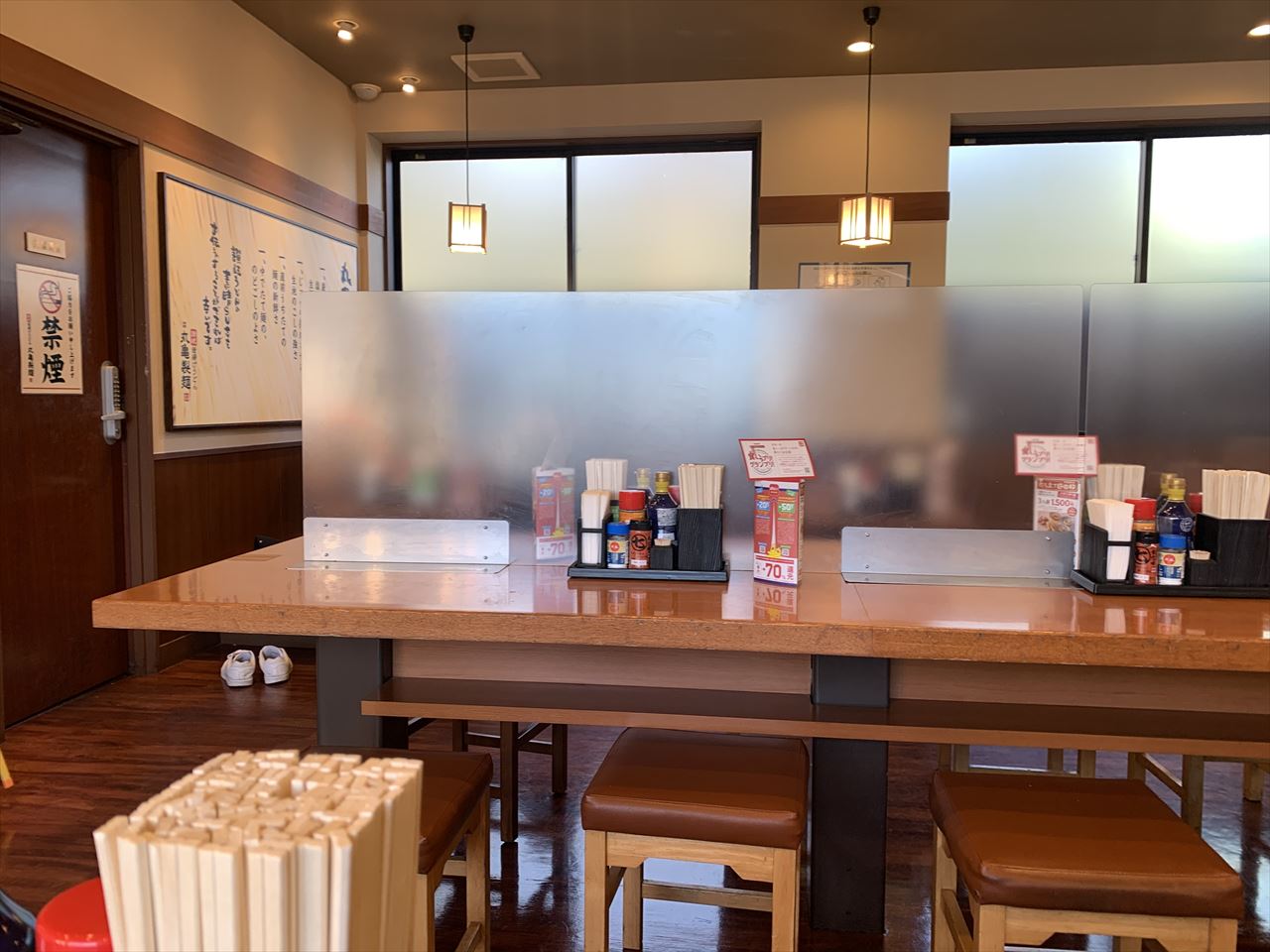
Seating is on a first-come, first-served basis, so sit down and eat where you can!
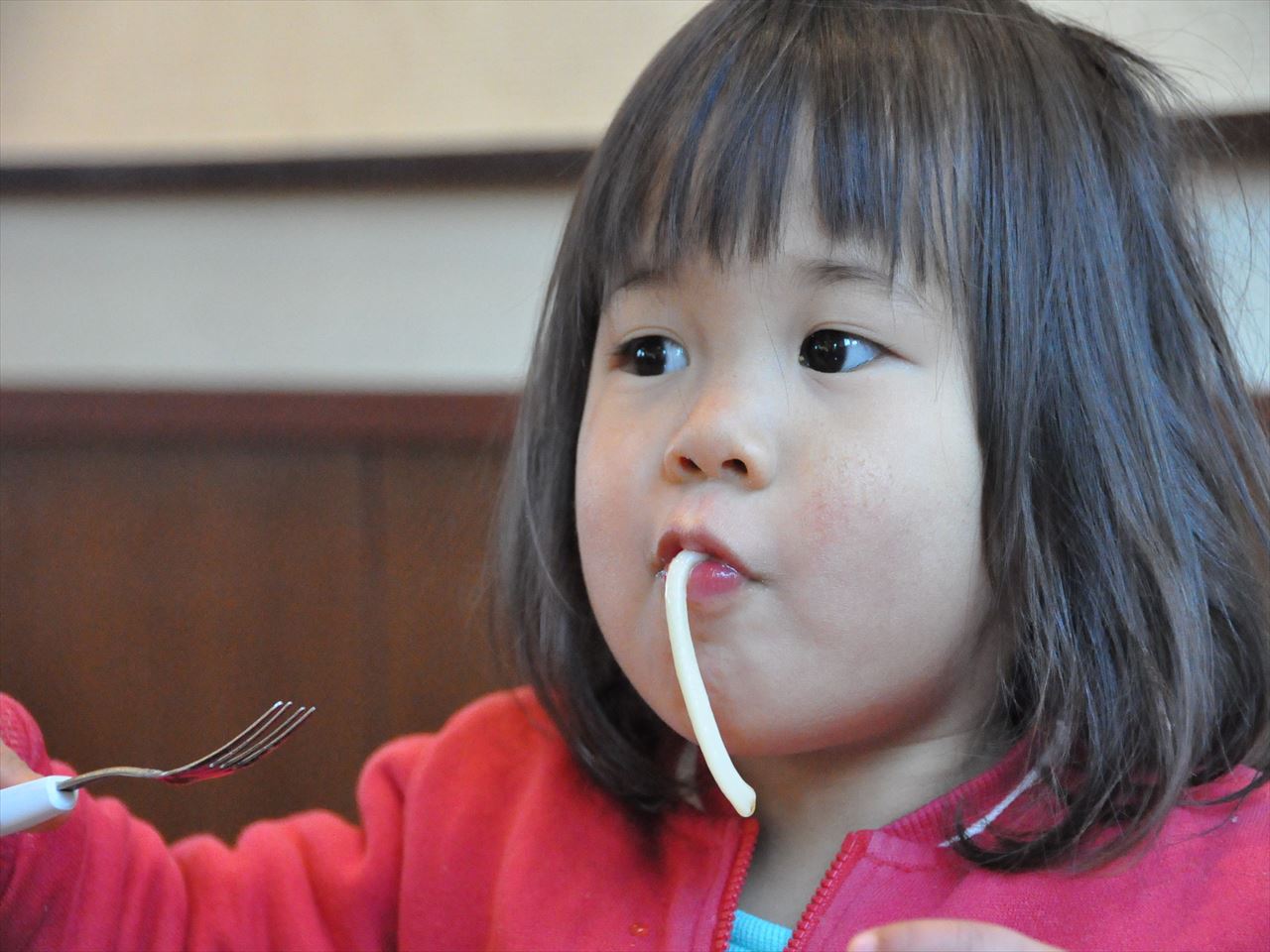
The udon noodles are long, but I just eat them as they are.
When I finish eating, I return it to the return corner and say thank you for the meal.
If it is not crowded, you can eat Japanese udon in 10 to 15 minutes.
Moreover, it is cheap, so it is a very popular restaurant in Japan.
In Japan, tipping is generally not necessary.
If you eat or drink in a restaurant, you will be charged a 10% consumption tax.
Soba and Udon at Train Stations
There are also restaurants where you can eat "udon and soba" on the platforms of train stations, and they are called "tachiyaki soba" because there are no chairs and you have to eat standing up in order to eat quickly and get on the train right away.
Basically, standing soba is one of the fastest food shops in Japan. If you can find a place to eat soba or udon on a station platform, try it.

